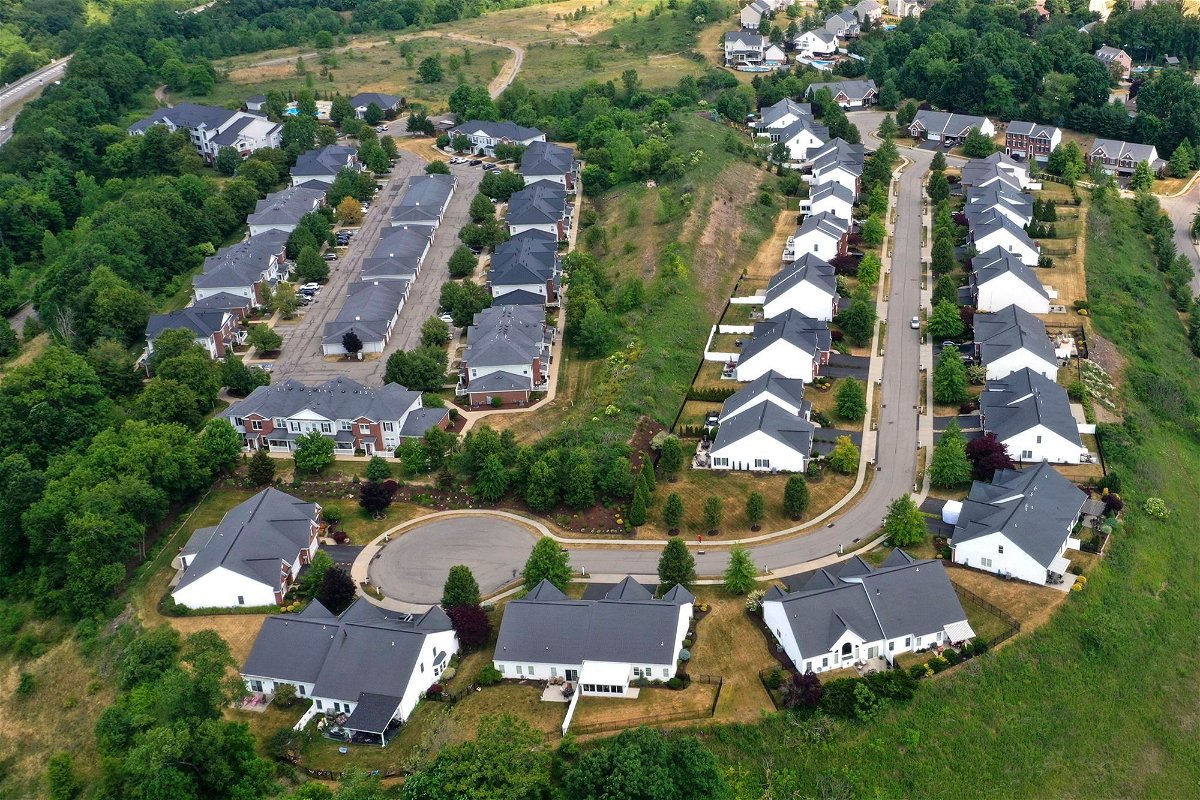Mortgage rates tick down for the second week in a row

Mortgage rates ticked down this week for the second week in a row.
By Anna Bahney, CNN
Washington, DC (CNN) — Mortgage rates ticked down this week for the second week in a row, as investors absorbed the Federal Reserve’s expected pause on raising the federal funds rate after 10 consecutive rate hikes.
The 30-year fixed-rate mortgage averaged 6.69% in the week ending June 15, down from 6.71% the week before, according to data from Freddie Mac released Thursday. A year ago, the 30-year fixed-rate was 5.78%.
Mortgage rates have remained over 5% for all but one week during the past year and even went as high as 7.08%, last reached in November.
“Mortgage rates decreased slightly this week in anticipation of the pause in rate hikes by the Federal Reserve,” said Sam Khater, Freddie Mac’s chief economist. “As inflation continues to decelerate, economic growth is slowing and the tightening cycle of monetary policy is reaching its apex, which means mortgage rates are expected to decrease later this year and into next.”
The average mortgage rate is based on mortgage applications that Freddie Mac receives from thousands of lenders across the country. The survey includes only borrowers who put 20% down and have excellent credit.
Stubborn inflation is cooling some
The rate for a 30-year fixed-rate mortgage has been volatile amid lagging economic indicators and the Fed’s meeting.
The Fed does not set the interest rates that borrowers pay on mortgages directly, but its actions influence them. Mortgage rates tend to track the yield on 10-year US Treasuries, which move based on a combination of anticipation about the Fed’s actions, what the Fed actually does and investors’ reactions. When Treasury yields go up, so do mortgage rates; when they go down, mortgage rates tend to follow.
Tuesday’s Consumer Price Index data showed that headline inflation cooled to 4% in May, down from 4.9% in April, suggesting Fed policy and tighter lending standards are cooling price growth.
“Gradually slowing inflation gave the Fed committee confidence that the rate increases made to date are having the intended effect,” said Hannah Jones, an economic data analyst at Realtor.com. “As a result, the Fed chose to pause interest rate hikes in this week’s meeting.”
Although the economy has likely not yet seen the full impact of the Fed’s 10 consecutive rate hikes, which total a 5 percentage point increase in the policy rate since March 2022, the action marked an important step in the Fed’s policy, said Jones. “Incoming economic data will reveal whether enough has been done to bring inflation back down to the 2% target.”
More hikes may be necessary to cool inflation and the hot job market.
“The interest rate hikes to date are likely to take some time to move through the economy and the Fed will adjust policy as they see fit in upcoming meetings,” said Jones. Importantly, she added, the forecast released suggested that more hikes are possible by the end of the year.
But this rate pause is not going to push mortgage rates down immediately.
“Though slowing inflation signifies better economic conditions ahead, borrowing, including for a home purchase, is likely to remain expensive for the remainder of the year,” said Jones.
A cooler selling season with rate-sensitive buyers
With fewer homes to buy and rates over 6.5%, the spring-into-summer peak home sales market has been cooler than usual.
As mortgage rates declined last week, applications rose from the week before, but remained well below levels from a year ago, according to the Mortgage Bankers Association.
“Rates that are still more than a percentage point higher than a year ago, and low for-sale inventory continue to constrain homebuying activity in many markets,” said Joel Kan, MBA’s vice president and deputy chief economist. “The average loan size on a purchase loan decreased for the third straight week, as we continue to see more first-time homebuyer activity in the purchase market.”
A drop in credit availability is also constraining buyers. The average credit scores of buyers and the size of down payments are on the rise, an indication that tightening credit is compounding the significant challenges already facing potential buyers.
Mortgage credit availability decreased in May, according to the MBA’s analysis of data from ICE Mortgage Technology.
“Mortgage credit availability decreased for the third consecutive month, as the industry continued to see more consolidation and reduced capacity as a result of the tougher market,” said Kan.
If there is any silver lining for home buyers it is that analysts do not expect home prices to rise to a new peak this summer, as they have during the summer of the past few years.
“Though housing demand has softened nationally, many local markets, especially in affordable areas, continue to attract significant attention from home shoppers,” said Jones.
But in many parts of the country, home buying will remain competitive and not affordable for many buyers.
“Despite an annual price decline, homes in many areas are out of the feasible price range for many buyers and still-high interest rates are discouraging homeowners from giving up their current mortgage rate and listing their homes for sale,” said Jones.
The-CNN-Wire
™ & © 2023 Cable News Network, Inc., a Warner Bros. Discovery Company. All rights reserved.



